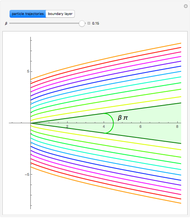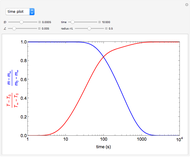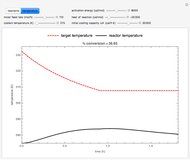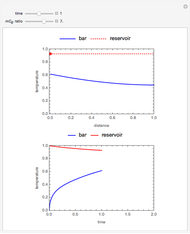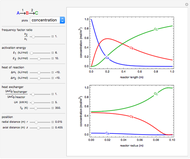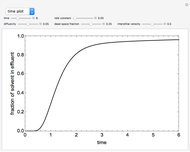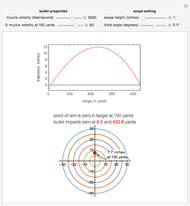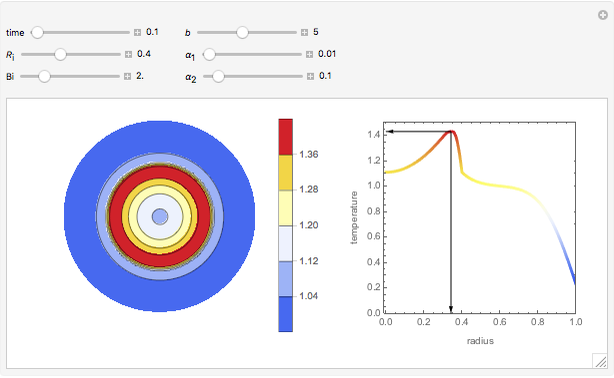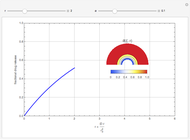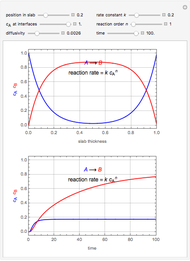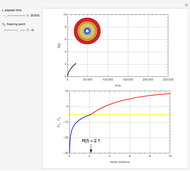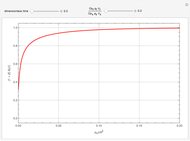This Demonstration illustrates the effect of axial conduction in the Graetz problem of heat transfer between a fluid in laminar flow and a tube at constant temperature.
Consider the fully developed laminar flow of a fluid in a tube with a wall temperature  ; the fluid has an entering uniform temperature
; the fluid has an entering uniform temperature  . The dimensionless energy equation, assuming constant physical properties and axis symmetry, is:
. The dimensionless energy equation, assuming constant physical properties and axis symmetry, is:
 ,
,
with boundary conditions:
 ,
,
 ,
,
 ,
,
 ,
,
in which dimensionless variables are defined by:
 ,
,
 ,
,
 ,
,
 ,
,
where
 and
and  are the radial and axial coordinates, respectively,
are the radial and axial coordinates, respectively,
 is the tube radius,
is the tube radius,
 is the fluid specific gravity,
is the fluid specific gravity,
 is the fluid heat capacity,
is the fluid heat capacity,
 is the maximum laminar velocity, and
is the maximum laminar velocity, and
 is the fluid heat transfer coefficient.
is the fluid heat transfer coefficient.
The dimensionless equation is solved using the built-in Mathematica function NDSolve, and the effect of the Péclet number on temperature is shown for various radial and axial positions. The Péclet number is the ratio of convective to conductive heat transfer; thus the effect of axial diffusion becomes important at small Péclet numbers, for example, heat transfer in liquid metals.
[less]



























